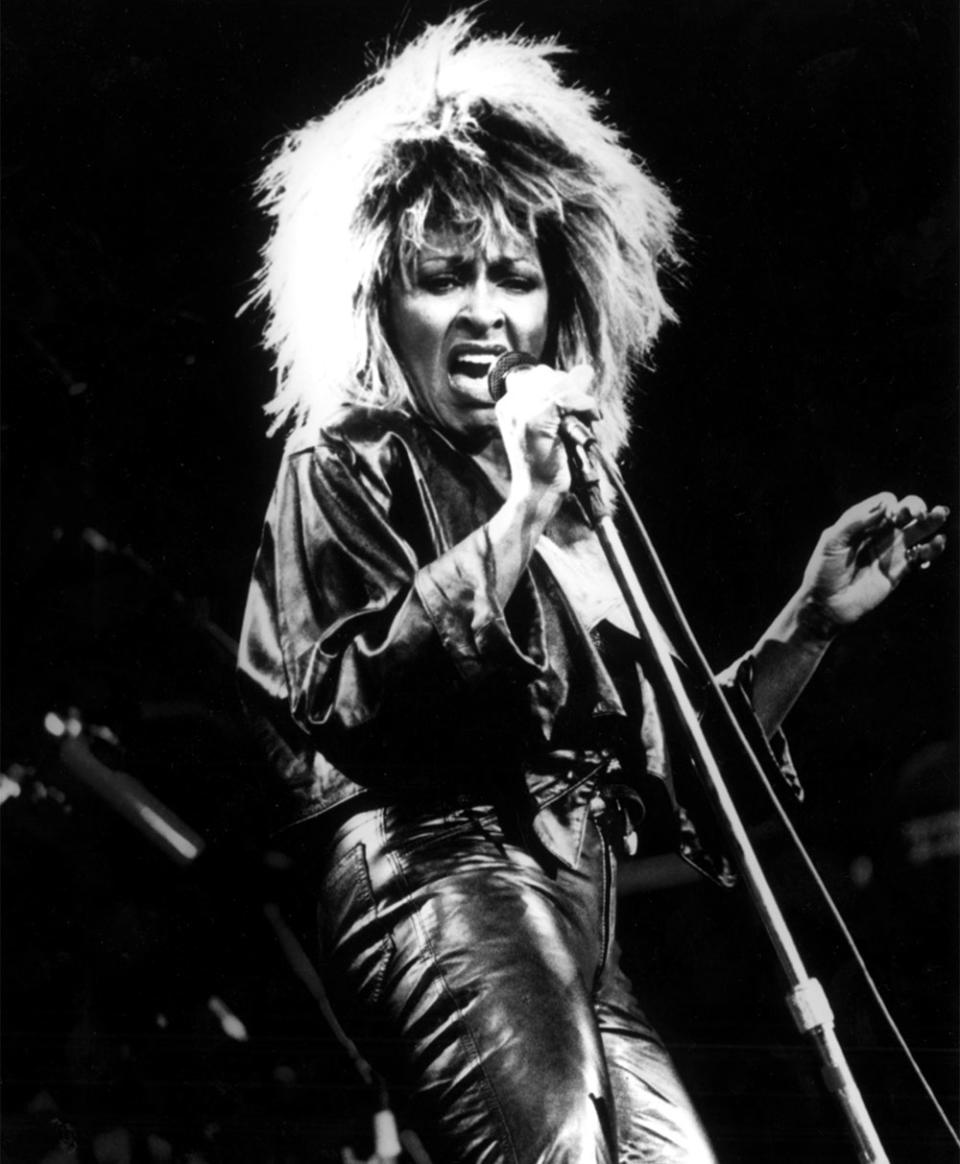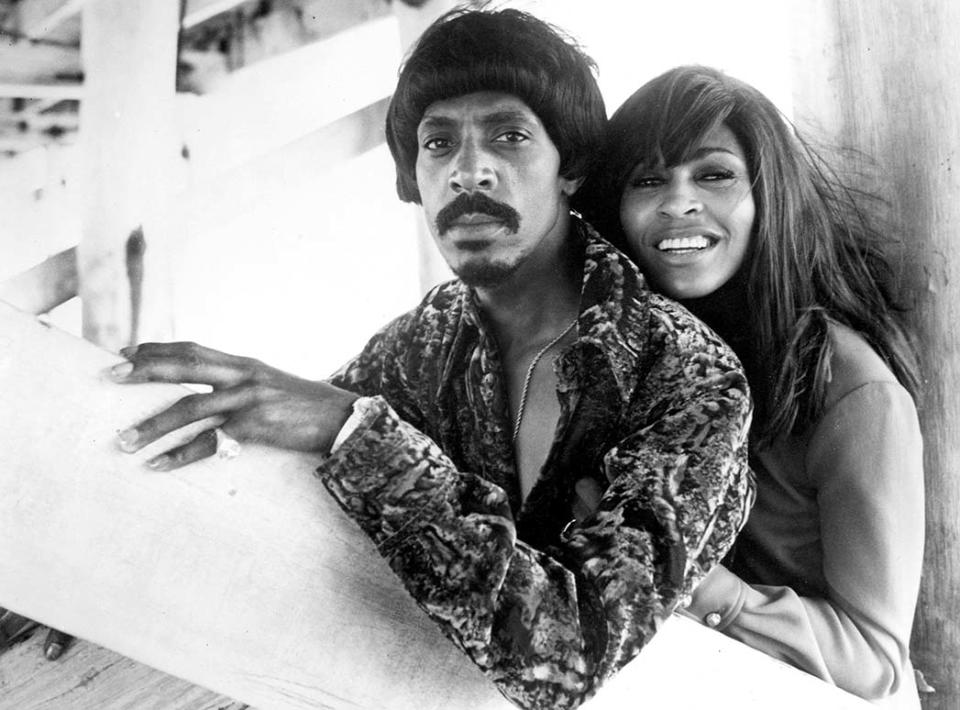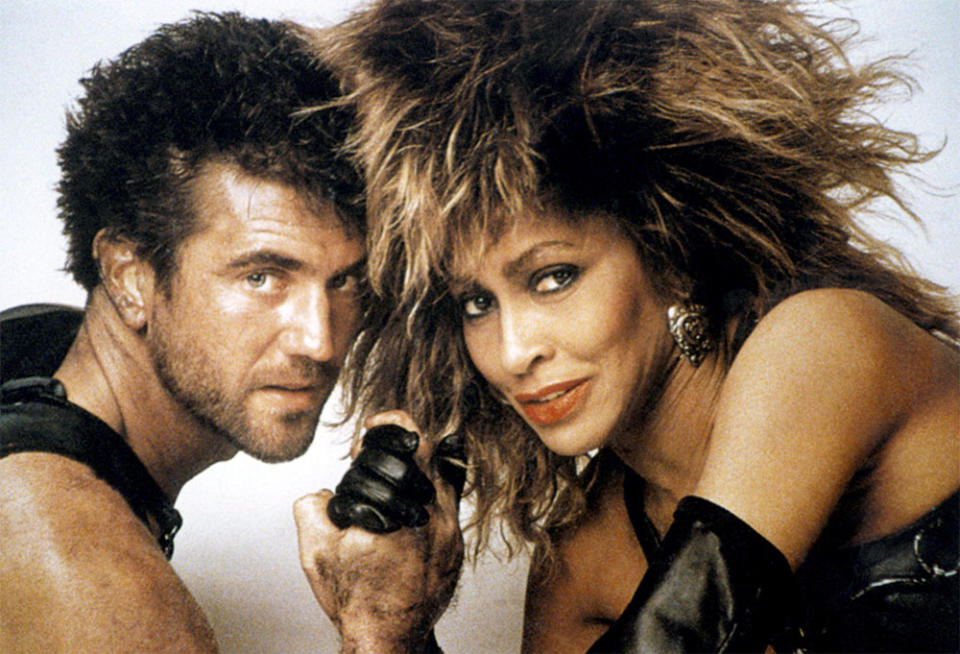Tina Turner, Electrifying Entertainer and Feminist Hero, Dies at 83

Tina Turner, the trailblazing rock star who set world records for ticket sales — and whose dramatic triumph over domestic abuse and the music industry itself made her a feminist icon — has died. She was 83.
Turner died Wednesday “after a long illness” in her home in Kusnacht near Zurich, Switzerland, her reps announced. “With her, the world loses a music legend and a role model,” they said.
More from The Hollywood Reporter
Kenneth Anger, Pioneering Experimental Filmmaker, Dies at 96
Ambra Danon, Oscar-Nominated 'La Cage aux Folles' Costume Designer, Dies at 75
An electrifying live entertainer who sold 200 million albums and won eight Grammy Awards, Turner rose to fame in the 1960s as the centerpiece of the Ike & Tina Turner Revue, a St. Louis blues band turned high-wire rock act.
During more than 60 years in the spotlight, she transformed notions about aging, opportunity and resilience, most notably with her landmark album Private Dancer, which launched her to solo superstardom (finally) at age 44.
At the movies, Turner had iconic roles as the Acid Queen in The Who’s rock opera Tommy (1975) and as the ruthless Aunty Entity in Mad Max Beyond Thunderdome (1985). On television, she was a fixture on variety shows, on MTV and in commercials, most notably as the face (and legs) of a $20 million campaign for Hanes hosiery, which hired her at 56 to energize the brand.
But it was her harrowing 1986 memoir, I, Tina, in which she revealed ex-husband Ike Turner’s 16-year reign of terror, her escape and rise from economic ruin that sealed her most enduring role — as inadvertent activist.
“Do you realize you’re a feminist hero?” Larry King asked her in 1997. “I’m beginning to,” she said.
A redemption tale told in chilling detail, her book brought critical light to a mostly hidden crisis, inspiring a feature film, the Angela Bassett-starring What’s Love Got to Do With It (1993), and the acclaimed 2018-19 Broadway and West End production Tina: The Tina Turner Musical.
With her fringed miniskirts, taut frame, flying hair and swagger — all shocking early on — and a peerless rock ‘n’ soul catalog, Turner honed a stage act that came to fill stadiums, drawing crowds exceeding those brought in by the likes of The Rolling Stones, Bruce Springsteen and Queen.
During 1988’s “Break Every Rule” tour, the two-time Rock and Roll Hall of Famer — she was voted in as a solo artist in May 2021 — shattered box office records in 13 countries and attracted 180,000 fans to Maracanã Stadium to see her perform in Brazil.
“I had that strange voice that most girl singers didn’t have,” Turner told CBS’ Gayle King in 2019 about her affinity for rock music. “In the beginning, I thought it was kind of ugly because it didn’t sound like Diana Ross, but then afterward I thought, ‘Yeah, it sounds like the guys.'”
Renowned for seemingly limitless stamina, Turner claimed to have no special workout regimen other than staying active, eating well and “never smoking, never drinking and never doing drugs.”

Through her final concerts before retirement at age 69, she was still tearing through the same choreography she had invented in the ’60s as well as continuing with a nightly heart-stopping stunt, during which she’d sail over the arena floor — unharnessed — in a cherry-picker, then dance in stilettos on the crane’s slim hydraulic arm.
Over the decades, she traversed Grammy categories, using a four-octave range to move seamlessly from R&B to rock and pop, winning trophies in all three genres. She created an inescapable batch of ’80s and ’90s hits — among them “(Simply) The Best,” “What’s Love Got to Do With It,” “Better Be Good to Me” and “I Don’t Wanna Fight.”
But she was equally known for remaking songs that were already perfect: Al Green’s “Let’s Stay Together,” The Beatles’ “Help!” and John Fogerty’s “Proud Mary,” which became her career-long anthem.
She said she was relieved when she heard the first playback of her recording of Green’s classic. “It was just my version,” she told BET, “but staying right with [his] same sound and not destroying that.” Years later, Green sang the song back to her during her Kennedy Centers Honors tribute in 2005.
Meant to be a stand-alone single overseas, Turner’s “Let’s Stay Together,” following her absence of more than 10 years from pop radio, seemed to come out of nowhere in 1983. When the song climbed the charts, first in the U.K. and then in the U.S., stunned record execs scrambled to create an album to go with it.
Recorded in England in just two weeks, Private Dancer — with its sultry title track written by Dire Straits frontman Mark Knopfler — was released in May 1984. By the time Turner arrived stateside for a summer tour opening for Lionel Richie, “What’s Love Got to Do With It” had caught fire on the way to No. 1 on the Billboard Hot 100.
Still, she stayed on as Richie’s opener, playing courteous 25-minute sets, careful to not upstage him. Just a few months later they would celebrate their multiple Grammy victories together.
Tina Turner was born Anna Mae Bullock in rural Nutbush, Tennessee, on Nov. 26, 1939. Abandoned by her parents at 11, she was sent to live with a grandmother in nearby Brownsville. After her grandmother’s death, she moved to St. Louis to rejoin her mother.
With older sister Alline, she would visit Ike Turner’s Manhattan Club in East St. Louis, Illinois, and its crosstown rival, the Club Imperial, where Ike’s Rhythm Kings band and other pioneering acts, among them Miles Davis and Chuck Berry, were regulars.
Joining the Kings in 1958 as “Little Ann,” Turner sang lead on 1960’s “A Fool in Love.” It was their first hit and one of the first R&B records to cross over to the pop charts.
Turner’s voice on the recording was something of an accident, as she was temporarily filling in when vocalist Art Lassiter didn’t show up at the studio.
When record executives told Ike they preferred the song the way it was, he quickly changed the name of his band to the Ike & Tina Turner Revue and told Anna Mae — after the fact — that she would be called “Tina.” He then trademarked the name “Tina Turner” so he could replace her with a stand-in if she ever left the group.
“He controlled her whole life,” Rhonda Graam, the band’s tour manager, said in a 1992 documentary. “She couldn’t do anything without asking Ike first.”

After catching the Turners at the Imperial one night, a young Mick Jagger asked them to join as openers for The Stones in 1966. It was the beginning of a long friendship with Jagger — and with the U.K., where Turner’s status as a rock ‘n’ blues giant was revered.
Back home with Ike, however, she was a hostage and the target of violence so horrific, she would often taste blood in the back of her throat while onstage. Her injuries often were met with indifference by white doctors during trips to the ER.
Isolated and without bank accounts of her own, Turner attempted suicide in 1968 by swallowing a bottle of sleeping pills backstage before a gig. She was briefly hospitalized and quickly returned to a relentless touring schedule.
Her world would broaden only occasionally. In 1966, producer Phil Spector created the pop opus “River Deep, Mountain High” for her — on the condition that Ike stay clear of their recording sessions. Spector described his time in the studio with her as “working with a perfect instrument.”
On another rare solo excursion — this time to England for the filming of Tommy in 1974 — Turner reconnected with co-star Ann-Margret, whose lucrative Las Vegas shows (sustained without hit singles or even a recording contract) had long intrigued her.
“She had dancers and the greatest costumes and they performed,” Turner said in 1992. “She didn’t have a record, and I thought, ‘I can do that!’ “
While traveling to a concert in 1976, Turner endured what would be her final domestic assault. With her husband asleep in their Dallas hotel room, she grabbed her purse and ran, dodging semi-trailers as she fled across the interstate to a Ramada Inn she spotted in the distance.
With her face bloodied and 36 cents and a Mobil credit card to her name, she was unsure what to expect when she approached the manager. He recognized her and gave her a room.
It was the start of an eight-year odyssey that included food stamps, stints cleaning homes and rejection from label executives who dismissed her as “too old” to start over at age 37.
Using production equipment leant to her by Ann-Margret, she created a solo act anyway and forged ahead. She played hotel lounges and TV variety shows, Donny and Marie, Cher, The Sonny and Cher Show and The Brady Bunch Variety Hour among them.
Though she was earning little money and in need of artistic direction, she called it a happy period. “After I left Ike, Bob Mackie made me a costume that had wings,” she said in an NBC interview in 2020. “I felt like I was flying. I was barely paying the bills, but we were having a wonderful time. I learned I could decide what tempo the songs should be.”
She won the sole use of her name (and nothing else) in her 1978 divorce. Despite flopping with a couple of solo albums, a rising Australian manager, Roger Davies, took her on in 1980, recognizing the nonpareil performance skills she had refined over thousands of hours onstage.
Jagger and other British superstars, among them Elton John, Rod Stewart, David Bowie and Eric Clapton, lined up to share the mic with her. She created headline-grabbing shows of her own, notably at American hotspots the Ritz in New York and the Venetian Room in San Francisco.
“If there have to be sex symbols, Tina Turner is the best kind — wise, tough and adult,” music critic Jon Pareles wrote of the Ritz shows in 1984.
Though she had asked Hollywood directors to keep her in mind for acting roles, she turned down Steven Spielberg’s offer to portray Shug Avery in The Color Purple, calling the part “too close to home.” (She would go on instead to star opposite Mel Gibson in Mad Max Beyond Thunderdome.)

For much of her career, Turner remained resolute in her desire to avoid situations that reminded her of her past. Even when Disney executives toned down the violence in What’s Love Got to Do With It (on the grounds that the reality was too awful to believe), she refused to see it. She had no comment when Ike died in 2007.
Said Bassett in a statement: “How do we say farewell to a woman who owned her pain and trauma and used it as a means to help change the world? Through her courage in telling her story, her commitment to stay the course in her life, no matter the sacrifice, and her determination to carve out a space in rock and roll for herself and for others who look like her, Tina Turner showed others who lived in fear what a beautiful future filled with love, compassion and freedom should look like.
“Her final words to me — for me — were, ‘You never mimicked me. Instead, you reached deep into your soul, found your inner Tina and showed her to the world.’ I shall hold these words close to my heart for the rest of my days.”
Turner penned a second memoir, My Love Story, which delved further into her hardships, including a 2013 stroke, a cancer battle, kidney failure and the 2018 suicide of her oldest child, Craig Turner, her son with musician Raymond Hill.
The book also details her romance with Erwin Bach, the German record executive she met in an airport in 1985. Ignoring conventional timelines once again, she threw herself a dream wedding at age 73 after she and Bach had been together for 27 years. Wearing a green and black Armani ball gown, she walked up the aisle after the ceremony to a recording of Frank Sinatra singing “My Way.”
In addition to Bach, survivors include two of Ike’s sons, Michael and Ike Jr., whom she adopted. There will be a private funeral ceremony attended by close friends and family.
Her only child with Ike, Ronnie, died suddenly at age 62 in December.
Though weakened by health issues, she was an active producer of Tina: The Tina Turner Musical, watching over details and demonstrating her signature dance steps to castmembers.
She said she had no need for a Broadway musical about her life but was pleased her message was carrying on. For decades she had received correspondence from people worldwide, detailing how her accomplishments had inspired them to take action in their own lives.
Joining the Tina cast on stage in 2019 for an opening night bow at the Lunt-Fontanne Theatre in New York, she said her life story “was like poison that turned to medicine.”
Asked by Oprah Winfrey in 2013 what she thought her legacy would be, Turner replied, “Endurance.”
“My legacy is that I stayed on course from the beginning until the end,” she added. “I believed in something inside of me that told me you can make something better. My legacy is a person who strived for something better — and got it.”
Best of The Hollywood Reporter

 Yahoo Finance
Yahoo Finance 